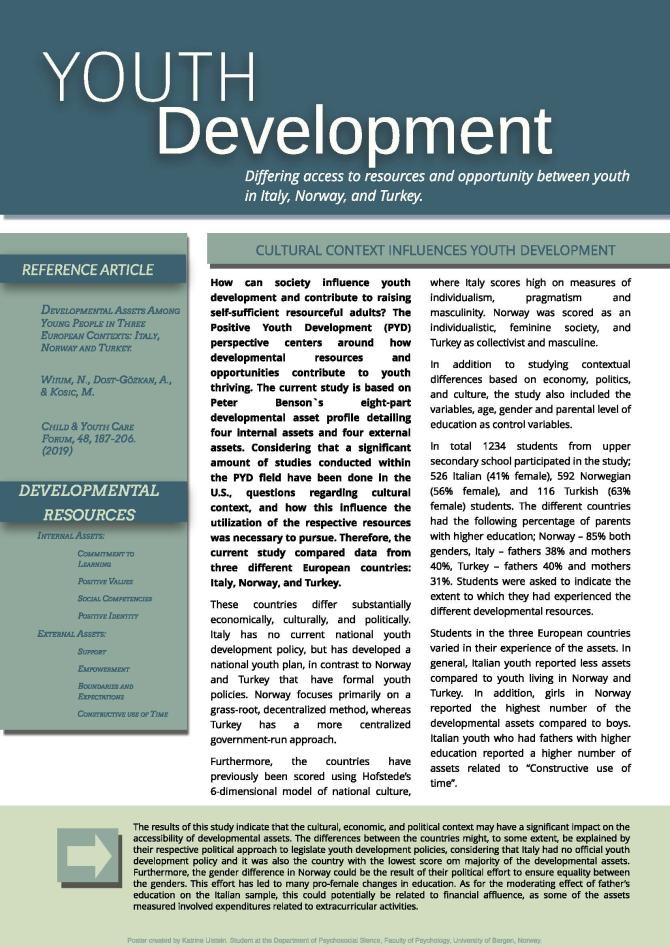Cultural context influences youth development
Differing access to resources and opportunity between youth in ltaly, Norway, and Turkey.
Main content
How can society influence youth development and contribute to raising self-sufficient resourceful adults? The Positive Youth Development (PYD) perspective centers around how developmental resources and opportunities contribute to youth thriving. The current study is based on Peter Benson' s eight-part developmental asset profile detailing four internal assets and four external assets. Considering that a significant amount of studies conducted within the PYD field have been done in the U.S., questions regarding cultural context, and how this influence the utilization of the respective resources was necessary to pursue. Therefore, the current study compared data from three different European countries: ltaly, Norway, and Turkey.
These countries differ substantially economically, culturally, and politically. ltaly has no current national youth development policy, but has developed a national youth plan, in contrast to Norway and Turkey that have formal youth policies. Norway focuses primarily on a grass-root, decentralized method, whereas Turkey has a more centralized government-run approach.
Furthermore, the countries have previously been scored using Hofstede's 6-dimensional model of national culture, where ltaly scores high on measures of individualism, pragmatism and masculinity. Norway was scored as an individualistic, feminine society, and Turkey as collectivist and masculine.
In addition to studying contextual differences based on economy, politics, and culture, the study also included the variables, age, gender and parental level of education as control variables.
In total 1234 students from upper secondary school participated in the study; 526 ltalian (41 % female), 592 Norwegian (56% female), and 116 Turkish (63% female) students. The different countries had the following percentage of parents with higher education; Norway - 85% both genders, ltaly - fathers 38% and mothers 40%, Turkey - fathers 40% and mothers 31 %. Students were asked to indicate the extent to which they had experienced the different developmental resources.
Students in the three European countries varied in their experience of the assets. In general, ltalian youth reported less assets compared to youth living in Norway and Turkey. In addition, girls in Norway reported the highest number of the developmental assets compared to boys. ltalian youth who had fathers with higher education reported a higher number of assets related to "Constructive use of time".
The results of this study indicate that the cultural, economic, and political context may have a significant impact on the accessibility of developmental assets. The differences between the countries might, to same extent, be explained by their respective political approach to legislate youth development policies, considering that ltaly had no officia! youth development policy and it was also the country with the lowest score om majority of the developmental assets. Furthermore, the gender difference in Norway could be the result of their political effort to ensure equality between the genders. This effort has led to many pro-female changes in education. As for the moderating effect of father's education on the ltalian sample, this could potentially be related to financial affluence, as same of the assets measured involved expenditures related to extracurricular activities.
